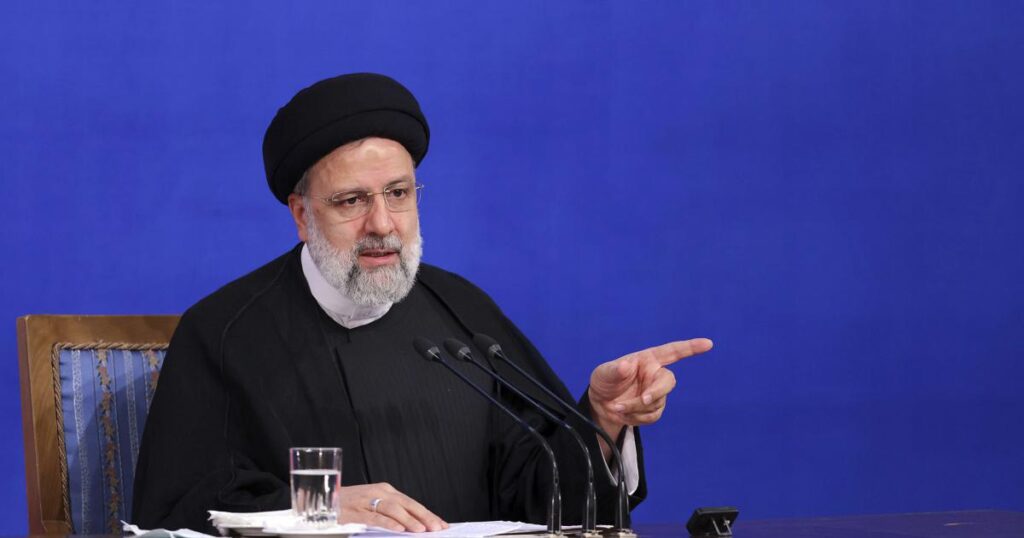TEHRAN – Iran is about to undermine months of negotiations to revive the 2015 nuclear deal that the United States withdrew from under former President Donald Trump, and his successor, Joe Biden, is seeking to restore it, provided Tehran returns to all its commitments under that agreement.
Iranian President Ebrahim Raisi stressed that reviving the agreement with major powers over his country’s nuclear program remains “useless” unless the International Atomic Energy Agency closes the issue of undeclared sites.
The issue of finding in earlier stages traces of nuclear materials at three sites that the Islamic Republic did not claim to have witnessed such activities, raises tension between Tehran on the one hand, and Western powers and the International Agency of the United Nations.
Iran’s insistence on closing this file without providing a convincing explanation about the traces of uranium that was found in one of the nuclear facilities raises doubts about its concealment and confirms that what it is hiding is so dangerous that it is ready to sacrifice all the steps it took in order to lift sanctions against it.
Ibrahim Raisi’s comments came as Iran began enriching uranium using one of three sets of advanced (IR-6) centrifuges that Tehran recently installed at its underground enrichment plant in Natanz, according to a report by the International Atomic Energy Agency to countries. Members.
The confidential report said that Tehran uses a series of up to 174 devices to enrich uranium to a purity of up to five percent, adding that of the other two series of “IR-6” devices in the underground plant, one was undergoing passivation, a process that precedes enrichment. The other has not yet been fed nuclear material.
His comments also come while Tehran is studying the US response to proposals submitted by the Islamic Republic in response to a “final” draft presented by the European Union with the aim of completing indirect talks between the two parties that began last year, with the aim of reviving the 2015 agreement that Washington withdrew from in 2018.
“On the issue of negotiations, the issue of guarantees (in reference to the issue of undeclared sites) is one of the core issues. All issues of guarantees must be resolved,” the Iranian president said, adding, “Without resolving the issues of guarantees, talking about the agreement is useless.”
Over the past months, Iran has reiterated its request to end the issue of these sites. In June, the IAEA’s Board of Governors passed a resolution condemning Iran for not cooperating with IAEA Director General Rafael Grossi in the case.
The move aroused sharp criticism from Tehran, which it considers a “political” measure, and in response it suspended a number of the IAEA’s surveillance cameras in some of its facilities.
The agreement between Tehran and six major international powers, whose official name is the “Joint Comprehensive Plan of Action”, allowed the lifting of sanctions on the Islamic Republic in return for reducing its nuclear activities and ensuring the peace of its program.
However, the United States unilaterally withdrew from it during the era of its former president, Donald Trump, re-imposing sanctions on Iran, which responded by beginning to gradually retreat from most of its commitments.
Tehran and the powers still affiliated with the agreement (France, Britain, Germany, Russia, and China) began talks to revive it in April 2021, which were suspended for the first time in June of the same year.
After its resumption in November, it was suspended again since mid-March, with points of disagreement remaining between Washington and Tehran, despite significant progress being made towards achieving the understanding.
In coordination with the European Union, the two sides held indirect talks for two days in Doha in late June, which did not lead to any significant progress. On August 4, the talks resumed in Vienna with the indirect participation of the United States.
After four days of negotiations, the European Union confirmed that it had presented to the two main parties a “final” settlement formula. Tehran initially presented its proposals to this text, and the United States responded to them last week. Tehran confirmed that it is studying this response before expressing its opinion to the European Union.

